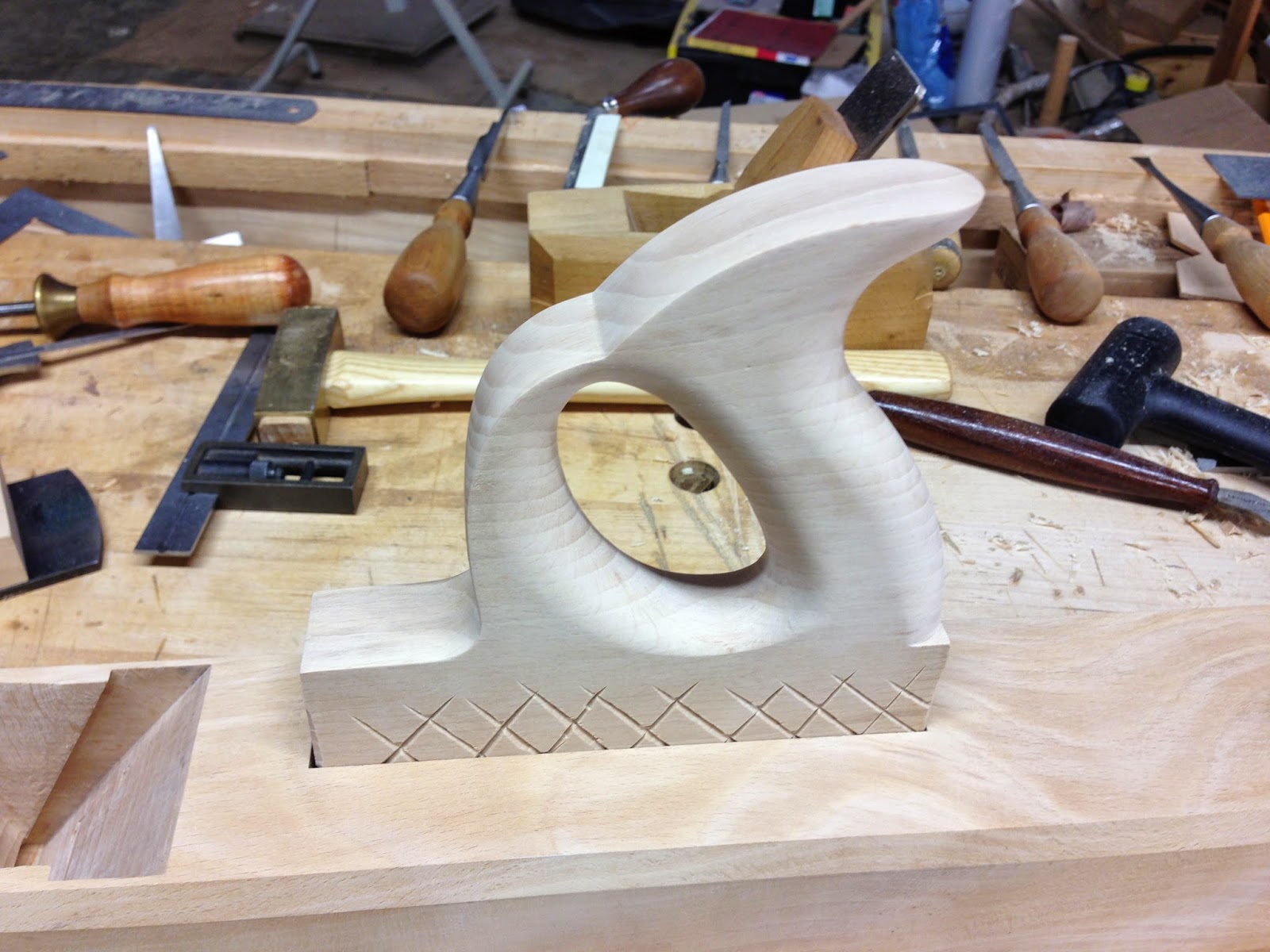Maybe someday I will get a proper camera and set aside two weeks to make and edit a complete series on how to make an entire plane like a rabbet or panel raiser or whatever. But until I do a Kickstarter or someone drops a paycheck in my lap for those two weeks this is probably about the best I can muster at the moment. I really do hope they are of some value. Anyhow, on to the handle instillation.
When making the mortise for the handle this is one of those places that I count on machine work to make a precision slot. I use my slot mortiser to make the slot and then I square up the corners with a corner chisel. I do this so that the joint makes the best glue up as possible.
Also, I don't want just the sides of the handle to adhere to the mortise but the bottom of the handle should make contact in the mortise as well. Usually in a typical furniture joint this would be end grain and wouldn't need to be glued but in this case we can take full advantage of the long grain surfaces coming together. This adds nearly a third more glueing surface to the joint.
When fitting the handle make the mortise first. Then with the handle left slightly oversized you can plane it down to make a perfect fit to the joint. I make some criss cross cuts about two thirds of the way up around the bottom of the handle to let the surfaces stay tight but slip together. This also lets any heavy build up of glue have a place to escape to rather than resisting instillation of a really tight joint.
The gap at the front of the handle is filled with a wedge. I actually undercut the back of the mortise ever so slightly and match the back of the handle with the same angle. Therefore once the front of the handle is wedged in place it locks the handle in place. It is a little thing but I figure why not.
One of the things I have seen "messed up" on a number of planes is the instillation of the handle. Often times it is a lot to do with the orientation of the wood. It might seem wrong at first but note that the handle wood is oriented in exactly the same way as the body of the plane. Quarter sawn and grain running front to back not up and down. If you glue in a handle with the grain up and down, the cross grain orientation of the two pieces with break the glue line within a few moisture cycles for sure.
Other than the wood orientation you need a good tight fit between the glue surfaces. That is what I show in the video and you really must use hide glue. Liquid hide glue is fine. I prefer the Old Brown glue brand but will use the Titebond brand as well. The Old Brown brand is nice and stinky like the glue pot version. I actually love the smell but then again I am sort of weird like that. You'll still need to heat the liquid version though. I would have shown the glue up but I didn't have anyone to hold the camera.
Again, don't use the yellow glue (PVA). When the joints are really tight the glue grabs when you are putting the joints together and it is a real pain. I only use the stuff for edge gluing joints. This is just the chairmaker in me coming out. Us guys never use the PVA stuff unless we feel like crying. Use what you want, you've been warned.
Enjoy!





Hi Caleb. On a lot of the traditional wooden planes fitted with a rear tote the front of the tenon is shaped with a slight back bevel to help reinforce its fit within the mortise.The front of the mortise is also undercut to match. When installing the tote the front of the tenon slides in 1st followed by the remaining tenon which is then tapped down into its proper seat with a wooden mallet. The result is a slightly stronger joint compared to that of keeping all the sides of the mortise and tenon fit vertically square.
ReplyDeleteStewie;
Hi Caleb,
ReplyDeleteI came across your post while looking for information about totes/handles for wooden hand planes. I've made several Krenov style planes and I would like to add a tote or handle more in the razee plane style. Did you ever post templates of the handles shown in this post? If not, are they available elsewhere?
Thanks,
Jeff Fleisher
This is a greeat post
ReplyDelete